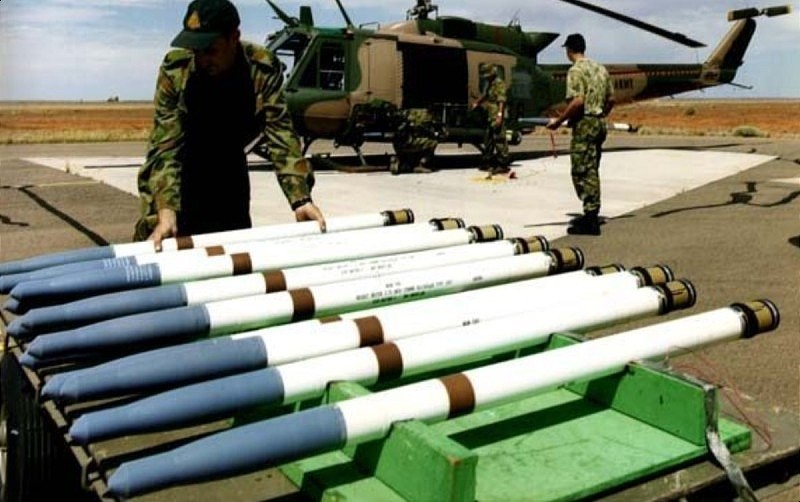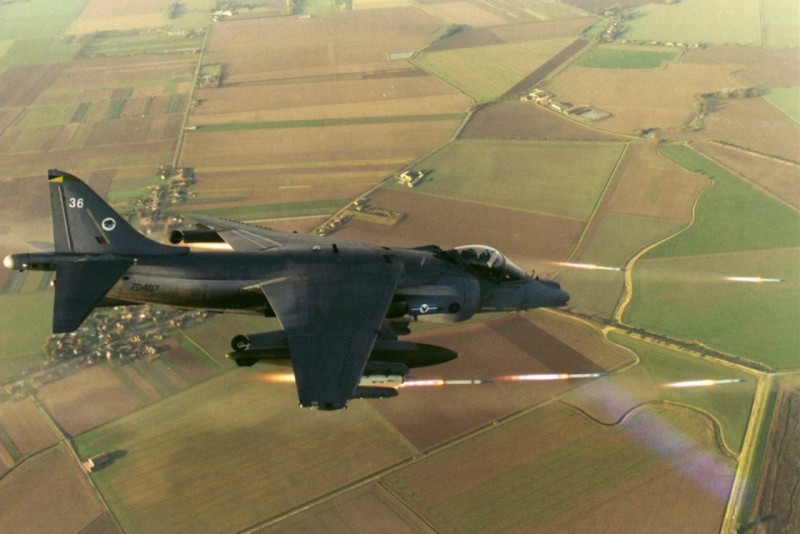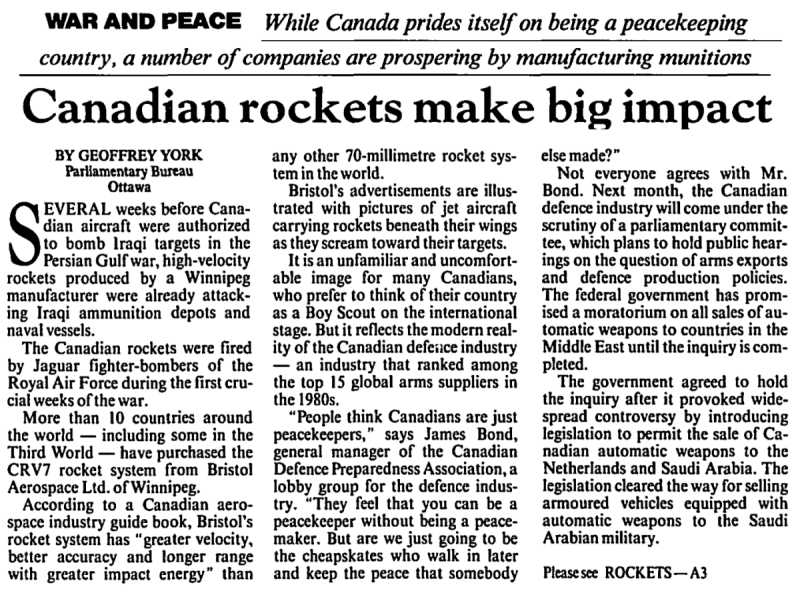Winnipeg’s hidden role in the global arms trade
Bristol Aerospace and Magellan’s decades-long production of military technology ties Canada’s heartland to conflicts worldwide

CRV7 (Canadian Rocket Vehicle 7) ground attack rockets, produced by Bristol Aerospace in Winnipeg, Manitoba. Photo courtesy Magellan Aerospace.
The Canadian arms industry is often seen as heavily concentrated in eastern Canada, and for good reason. Montréal ranks among the world’s leading aerospace hubs, home to major companies like CAE, Pratt & Whitney, and Bell Textron. In southern Ontario, the sector is anchored by General Dynamics Land Systems in London, along with the Canadian headquarters of US defence giants such as Lockheed Martin, Boeing, Raytheon, and L3Harris in Ottawa, which also hosts CANSEC, the country’s largest global defence and security trade show. Ammunition production is widespread across Québec and Ontario, too. Meanwhile, Halifax stands out as a key player thanks to Irving Shipbuilding, IMP Aerospace and Defence, and its role in hosting the Halifax International Security Forum.
Western Canada also plays a significant, though often overlooked, role in the country’s defence industry. Vancouver and Victoria contribute through naval production, while Winnipeg distinguishes itself for its aerospace manufacturing, which is frequently overshadowed despite its importance. The city also serves as the operational headquarters for the Royal Canadian Air Force and the Canadian NORAD Region, with nearby Portage la Prairie supporting RCAF pilot training. Yet public awareness of Winnipeg’s military ties remains surprisingly limited, even though the local NHL team’s logo is based on the CF-18 fighter jet, a design that required Department of National Defence approval and is celebrated with flyovers during playoff season.
The history of Winnipeg’s Bristol Aerospace—acquired by Magellan Aerospace in 1997 and still operating out of its original facilities in St. James and Rockwood—offers a revealing lens into the broader defence industry and its far-reaching, often devastating global impacts. Magellan’s role in producing key components for the F-35 fighter jet—deployed by Israel in its ongoing assault on Palestine—is just one of many stark examples of how Winnipeg’s aerospace sector contributes to military operations around the world, particularly in the Global South. The real “Winnipeg Jets” extend far beyond the hockey rink.
1980-85: Between 1980 and 1985, Winnipeg’s Bristol Aerospace was the single largest exporter of military commodities in Canada. The main product was the CRV7 (short for Canadian Rocket Vehicle 7) air-to-ground rocket that Bristol developed in collaboration with Canadian military researchers in the early 1970s to replace the Mk 4 “Mighty Mouse,” drawing technical inspiration from the company’s Black Brant sounding rockets used for upper atmospheric research. Entering full-scale production in 1976, the CRV7 directly competed with the US Hydra 70 for market share but found considerable adoption by NATO countries due to its high velocity, accuracy, and range when fired from fighter jets and combat helicopters. In Canada, it was a main armament of the CF-104 Starfighter and later the CF-18 Hornet. In 2010, anti-war activist and writer Richard Sanders described Bristol as “world famous for its government-subsidized CRV-7 air-launched weapons system.”
Grenada, 1983: As with Magellan’s current involvement in the F-35 program, Bristol Aerospace has a long history of manufacturing components for US fighter jets used in attacks on countries in the Global South. In his 1987 book Arms Canada: The Deadly Business of Military Exports, Ernie Regehr opens with a striking example: the largely hidden role of Canadian-made parts in the US invasion of Grenada and the overthrow of revolutionary leader Maurice Bishop in October 1983. Among them were “navigational components from Bristol Aerospace Limited of Winnipeg,” used in A-7 Corsair aircraft that carried out ground strikes during the assault.
Iraq, 1991: The CRV7 rocket, developed in Canada, saw extensive use by Western militaries during the Gulf War, most notably by the British RAF’s Jaguar attack aircraft. In August 1991, the Globe and Mail reported that “several weeks before Canadian aircraft were authorized to bomb Iraqi targets in the Persian Gulf war, high-velocity rockets produced by a Winnipeg manufacturer were already attacking Iraqi ammunition depots and naval vessels.” The contradiction at the heart of Canada’s arms trade did not go unnoticed at the time: in March 1991, Prime Minister Brian Mulroney publicly criticized the industry, stating, “it’s fundamentally inconsistent to develop it, to peddle it, to finance it, and then to deplore its use.”
Thailand, 1988-94: In 1992, Liberal MP Lloyd Axworthy and Ernie Regehr of Project Ploughshares publicly criticized the Canadian government, warning that “Canadian-made arms and ammunition are likely being used in the bloody crackdown against pro-democracy demonstrators in Thailand,” including Bristol Aerospace’s CRV7 rockets. While Canada did suspend arms exports to Thailand following the violence, the newly elected Liberal government later approved over $500,000 worth of CRV7 launchers and parts for shipment in September 1994. As the Ottawa Citizen reported, the federal government—receiving royalties from Bristol’s CRV7 sales due to its role in developing the system—remained dismissive of concerns that rogue elements within the Thai military might be diverting these weapons to “unsavory forces in neighboring countries,” such as Cambodia’s Khmer Rouge and Burma’s military junta.
CRV7 rockets are launched from a Harrier attack aircraft.
Turkey/Botswana, 1995–96: In 1986, Prime Minister Brian Mulroney deepened tensions around “Western alienation” with a controversial decision to award a lucrative CF-18 maintenance contract to Montréal-based Canadair—recently privatized and sold to Bombardier—instead of to a Winnipeg-led consortium headed by Bristol Aerospace, despite a review committee recommending Bristol for the job. As a consolation, the federal government soon granted Bristol a smaller contract to maintain and upgrade Canadair CF-5 aircraft for use as CF-18 trainers. However, after subsequent military budget cuts, Canada scrapped the CF-5 program and chose to sell off the jets—at a significant loss—with Bristol acting as the broker.
In 1995, Canada identified Turkey as a key potential buyer. The Gazette reported that the proposed sale was part of a “top-priority program under which Turkey’s fighter squadrons are being upgraded to better root out Kurdish guerrillas in strongholds along the Iraqi border.” While that deal ultimately fell through, Bristol successfully sold 13 CF-5 jets to Botswana the following year for US$50 million. The Globe and Mail noted that peace activists sharply criticized the deal, warning that Canada was gaining a reputation as a “poor man’s arms dealer” by increasing military exports to developing countries.
Yugoslavia, 1999: Another notable Bristol Aerospace product born of Cold War-era collaboration was the booster motor for the CL289 reconnaissance drone, developed jointly by Canada, France, and West Germany beginning in the mid-1970s. According to Bristol’s own corporate history, the company’s involvement in the project came “closely on the heels of the CRV7 program, and in no small measure due to an aggressive effort by Engineering and Marketing.” In 1992, Bristol secured a three-year contract to supply booster motors for the CL289 drones used by the German army. These drones would later see extensive deployment by both Germany and France during NATO’s 1999 bombing campaign against Yugoslavia. Germany ultimately retired the CL289 system in 2009.
New Mexico, 1999-2000: Bristol Aerospace’s decades of expertise in rocketry found yet another application in the development of the Excalibur rocket, designed to simulate a “high altitude supersonic target,” originally for the Canadian Navy. Beginning in 1999, the US Army began using Excalibur targets at the McGregor Range in New Mexico to test and evaluate Patriot surface-to-air missile (SAM) systems, with the rockets serving as stand-ins for ballistic missiles. In 2002, Bristol and Boeing were jointly selected to continue supplying Excalibur targets for ongoing Patriot testing. By 2006, journalist Richard Sanders cited the Excalibur as a key example of “Canadian complicity and participation” in the US-led ballistic missile defence (BMD) program. Bristol also produced other military target systems, including a 1994 US Army contract to modify Huey Cobra helicopters to resemble Russian attack helicopters “visually and on a radar screen to provide as realistic a target as possible.”
Globe and Mail clipping, 1991
Afghanistan, 2007: The British military was one of the most consistent users of Bristol’s CRV7 rockets, deploying them across multiple platforms, including the Jaguar attack fighter, Harrier strike aircraft, and Apache attack helicopter. As Armada International reported in 2007, the CRV7 remained a staple of British air operations in Afghanistan: “If two British Harriers are on patrol over Afghanistan, the leader would typically have two 245-kg freefall bombs and two rocket pods containing six and 19 Bristol Aerospace CRV7s.” CRV7s could be equipped with a variety of warheads including “flechette anti-tank,” “high explosive incendiary semi-armour piercing,” and “high explosive point detonating” for “antipersonnel applications.” That same year, Bristol came under fire for marketing the CRV7 as compatible with the US-made M73 submunition, commonly known as a “cluster bomb.” In response, the UK government attempted to redefine what constituted a cluster munition in order to continue using systems like the CRV7/M73 and the Israeli-made M85. However, both were ultimately destroyed in mid-2009 in advance of the global ban on cluster munitions. According to the United Nations, “a total of 28 countries and other areas are contaminated or suspected to be contaminated by cluster munition remnants.”
Ukraine/Russia, 2024–25: Canada retired the CRV7 from domestic service in the mid-2000s, placing over 80,000 live rockets into storage at the military’s ammunition depot in Dundurn, Saskatchewan. Following Russia’s invasion of Ukraine, and at the urging of a senior Ukrainian military official, Canada’s federal Conservatives began pushing for the rockets to be donated rather than destroyed as originally planned. In mid-2024, the Liberal government announced it would transfer an initial batch of CRV7 rocket motors to Ukraine, pending testing by Magellan Aerospace and the Department of National Defence. By the end of that year, Canada had delivered 2,160 CRV7 rocket motors and 1,300 warheads, followed by an additional 40,000 rocket motors in April 2025. At the time, a Ukrainian military publication noted that “some of the engines can be converted to produce ammunition for drones or improvised multiple launch rocket systems.” According to National Defence, Canada has since completed the full transfer of all 80,000 CRV7 rocket motors.
For decades, Bristol Aerospace—and later Magellan’s Winnipeg operations—have manufactured weapons and components used by Canadian, US, British, and other allied forces around the world. Although Magellan no longer produces the CRV7, its involvement in global weapons supply chains continues to grow. In June 2022, the company signed a deal with GE Aviation for the Winnipeg facility to handle repair and overhaul work on major components for the F-18 Super Hornet’s engine, an aircraft Boeing describes as “the backbone of the US Navy carrier air wing now and for decades to come.” In June 2024, Magellan secured an “indefinite quantity contract” with the US Department of Defense to produce aircraft parts for Black Hawk helicopters. Then, in April 2025, the company extended a long-term agreement with GE Aerospace for its Winnipeg and Mississauga plants to manufacture engine frames for South Korea’s KF-21 fighter jet program.
Winnipeg may not rival other cities in the size of its arms industry, but its role remains deeply troubling—and one that local anti-war movements should continue to challenge.
James Wilt is a Winnipeg-based PhD candidate and freelance writer. His latest book is Dogged and Destructive: Essays on the Winnipeg Police.










